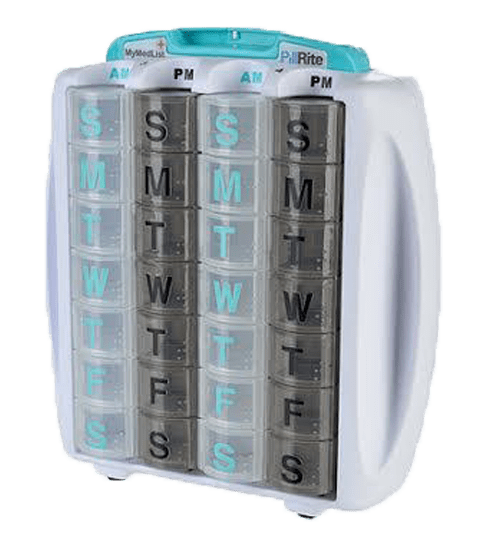 In a 2015 Washington Post article, the Journal of the American Medical Association reported that over 60% of adult Americans, or three out of every five, used some form of prescription drug. In the same year, the National Institutes of Health reported that half of all Americans use vitamins, and spend $36.7 billion each year on the supplements.
In a 2015 Washington Post article, the Journal of the American Medical Association reported that over 60% of adult Americans, or three out of every five, used some form of prescription drug. In the same year, the National Institutes of Health reported that half of all Americans use vitamins, and spend $36.7 billion each year on the supplements.
That’s a pile of pills to track. Keeping what you take organized and secure requires a few basic steps.
Getting organized: it starts with your doctor(s)
It’s all about communication: Talk with all your physicians and inform each as to what you take and who is prescribing medications. Inform them as to your supplement and OTC drug use, as certain supplements interfere with prescription medications.
Even if you are perfectly healthy, see your doctors regularly: Get an annual physical and blood work to check for signs of drug interaction issues or drugs that are no longer working.
Keep a list of dosage and drug changes: Keep track of what you’ve used, how much and the side effects. If you change doctors, you have this information immediately available to avoid interaction issues. (Visit MYPILLIST application Pillrite’s website for recording and maintaining your medical information)

Keep a list of your medications with you: A card in your wallet is an easy way for emergency medical personnel to know (descriptive medical documentation available in Pillist . Or use a smart phone app, such as Medsafe, a web application in plicate which manages multiple prescriptions and reminds you when it’s time for a dose.
Pharmacy protocol: the best use of time and money
Automatic vs. call-in refills: For those who get too busy or forgetful to call for refills, putting medications on auto-fill is an advantage. The pharmacy will fill the prescription when it is due, and usually call or email the doctor upon the final refill. Call-in refills keep cost control in the hands of the consumer, and can prevent wasteful refills if a drug type or dosage changes.
Mail order pharmacy vs. retail store: Mail order is convenient and can save money, especially for medicines you use regularly. But drug shipments arrive late, get lost, stolen, damaged or wasted when a dosage changes after a shipment arrives. And when you use the retail pharmacy, you communicate with a person who knows you, not an “800” number.
At home or away: store drugs in a safe place
Prescription medication theft is a critical issue: whether it is the teenager stealing Grandma’s pills or hospital volunteers and staff siphoning off supplies from their own pharmacy, drug diversion costs insurers over $100 billion annually. Proper prescribing, storage and disposal of medicines plays a major role in lowering both the financial and human cost.
Visit Pillrite’s website for a medicine organization system to store and manage your prescriptions for up to a month.
 http://www.pillrite.com
http://www.pillrite.com
